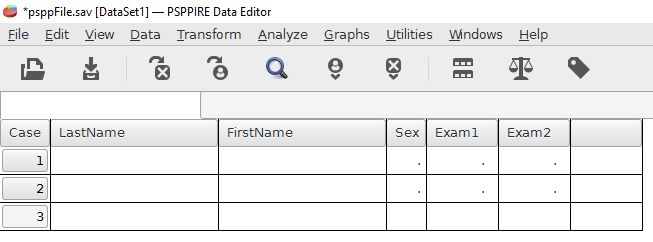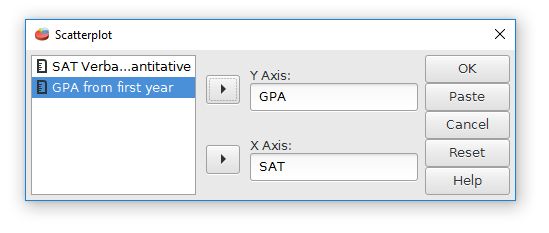

If I’m going to type code anyway, why not go for something like R? I always thought one of the main draws of SPSS was that it looked familiar (a bit like Excel) and offered a point and click interface. It’s not just about ability (I guess they could all learn the commands), but also about preference. Yes, it is a scientific program, but not all scientists (let alone students) are computer geeks. (2) Is it important for the GUI to feature all the abilities? For many of the SPSS users I meet it is. tar.gz once they browsed the GNU FTP server…


USING PSPP SOFTWARE
It’s not usually the kind of person who is going to compile their software I’m pretty certain they would have no idea what to do with a file ending in. (1) I guess I have a quite different user in mind when I think of SPSS. And finally, it is fast, much faster than SPSS! PSPP has got quite stable in recent releases it’s got a price tag hard to beat and moral superiority with being truly open source. Having said all this, I wanted to add on a positive note. With the advancements in Rstudio, R Commander, etc., I sometimes wonder whether PSPP is just advancing too slowly. So if I run a regression and want to add another variable, I’ll have to start from scratch in PSPP, entering each variable. One thing I missed a lot is that PSPP does not remember the last input. For this reason I am not surprised nobody has written an that there are not many introductions into statistics using PSPP… it’s just not there yet. So I can build a model, but do not even have one of the most basic means to check whether it is any good. Now I may want some multi-collinearity statistics, too. It’s there, the familiar box with arrows to choose variables. What do I mean by bits and pieces missing? Let’s take a linear regression. Again, when using code from the many websites helping SPSS users, unfortunately PSPP users will frequently hit a wall. Users will be able to run SPSS syntax with no problem, as long as PSPP has the commands implemented. Unless users follow a course designed specifically with PSPP in mind, they will frequently hit a wall. On the positive side, PSPP has a cleaner interface than SPSS, on the negative side some features are just not there. Unfortunately, and this is why PSPP is not even a replacement for basic SPSS users, there are bits and pieces missing even in the basic functions. So PSPP can readily do tables, ANOVA, linear and logistic regressions, and recoding variables.

why do we have tabs for the “Data View” and the “Variable View”, but a separate window for the results or syntax? Why mix the two?). Oddly enough, the PSPP team copy the SPSS interface quite well, including things that could readily be improved (e.g. The GUI frequently lags a bit the underlying capability, so some functions will only be available using SYNTAX. Second, recent releases cover many basic functions needed for an introductory statistics course. For Windows, this site often has the most up-to-date version, for Linux/Debian you’ll need to be on a “unstable” release or compile your own (which I doubt many will want to do given that we’re looking at an SPSS replacement, not R or Octave). By stating plainly that PSPP is not a replacement for SPSS, I don’t mean to dismiss PSPP.įirst off, PSPP is under active development, and getting hold of the latest version can be a bit difficult. Well, it isn’t (this is often the case with open source alternatives the ambition and reality do not quite match). PSPP is sometimes touted as a replacement for SPSS (including by its creators).


 0 kommentar(er)
0 kommentar(er)
